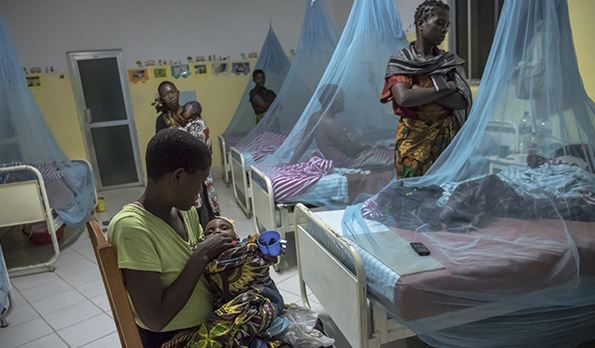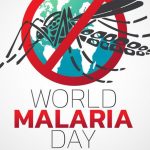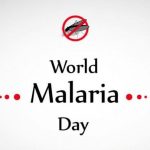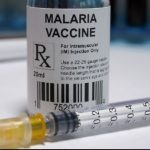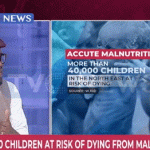World Health Organisation (WHO) has said that the effect of the fight against malaria will become visible when countries take it seriously.
Regional Director for Africa, Dr. Matshidiso Moeti expressed this view in the 2018 world malaria report published by WHO. He stated that when countries prioritise action on malaria, we see the results in lives saved and cases reduced.
“WHO and global malaria control partners will continue striving to help governments, especially those with the highest burden, scale up the response to malaria,” he said.
There is fresh anxiety over stalling in reduction of malaria cases after several years of decline, even as Nigeria and 10 other countries contributed greatly to global malaria cases. The 11 countries were responsible for 151 million infestations and 274,000 deaths, about 70 per cent in 2017.
Except India, the other 10 countries are in Africa (Burkina Faso, Cameroon, Democratic Republic of Congo, Ghana, Mali, Nigeria, Mozambique, Niger, Uganda and Tanzania).
According to the report, there were 3.5 million more malaria cases reported in these 10 African countries compared to the previous year, while India showed progress in reducing its disease burden.
This makes targets set by the global technical strategy of WHO for malaria from 2016 to 2030 to reduce malaria by at least 40 per cent by 2020 a tall dream.
To get the reduction back on track, WHO and partners are joining a new country-led response to scale up prevention and treatment, as well as increase investment, to protect vulnerable people from the deadly disease.
However, to meet the 2030 targets of the global malaria strategy, malaria investments should reach at least $6.6 billion annually by 2020 – more than double the amount available today, the report added.
For the second consecutive year, the WHO annual report revealed a rise in the number of people affected by malaria: in 2017, there were an estimated 219 million cases of malaria, compared to 217 million the year before.
WHO director-general, Dr. Tedros Ghebreyesus, said: “Nobody should die from malaria. But the world faces a new reality: as progress stagnates, we are at risk of squandering years of toil, investment and success in reducing the number of people suffering from the disease.
“We recognise that we have to do something different – now.”
World Health Organisation (WHO) has said that the effect of the fight against malaria will become visible when countries take it seriously.
Regional Director for Africa, Dr. Matshidiso Moeti expressed this view in the 2018 world malaria report published by WHO. He stated that when countries prioritise action on malaria, we see the results in lives saved and cases reduced.
“WHO and global malaria control partners will continue striving to help governments, especially those with the highest burden, scale up the response to malaria,” he said.
There is fresh anxiety over stalling in reduction of malaria cases after several years of decline, even as Nigeria and 10 other countries contributed greatly to global malaria cases. The 11 countries were responsible for 151 million infestations and 274,000 deaths, about 70 per cent in 2017.
Except India, the other 10 countries are in Africa (Burkina Faso, Cameroon, Democratic Republic of Congo, Ghana, Mali, Nigeria, Mozambique, Niger, Uganda and Tanzania).
According to the report, there were 3.5 million more malaria cases reported in these 10 African countries compared to the previous year, while India showed progress in reducing its disease burden.
This makes targets set by the global technical strategy of WHO for malaria from 2016 to 2030 to reduce malaria by at least 40 per cent by 2020 a tall dream.
To get the reduction back on track, WHO and partners are joining a new country-led response to scale up prevention and treatment, as well as increase investment, to protect vulnerable people from the deadly disease.
However, to meet the 2030 targets of the global malaria strategy, malaria investments should reach at least $6.6 billion annually by 2020 – more than double the amount available today, the report added.
For the second consecutive year, the WHO annual report revealed a rise in the number of people affected by malaria: in 2017, there were an estimated 219 million cases of malaria, compared to 217 million the year before.
WHO director-general, Dr. Tedros Ghebreyesus, said: “Nobody should die from malaria. But the world faces a new reality: as progress stagnates, we are at risk of squandering years of toil, investment and success in reducing the number of people suffering from the disease.
“We recognise that we have to do something different – now.”
World Health Organisation (WHO) has said that the effect of the fight against malaria will become visible when countries take it seriously.
Regional Director for Africa, Dr. Matshidiso Moeti expressed this view in the 2018 world malaria report published by WHO. He stated that when countries prioritise action on malaria, we see the results in lives saved and cases reduced.
“WHO and global malaria control partners will continue striving to help governments, especially those with the highest burden, scale up the response to malaria,” he said.
There is fresh anxiety over stalling in reduction of malaria cases after several years of decline, even as Nigeria and 10 other countries contributed greatly to global malaria cases. The 11 countries were responsible for 151 million infestations and 274,000 deaths, about 70 per cent in 2017.
Except India, the other 10 countries are in Africa (Burkina Faso, Cameroon, Democratic Republic of Congo, Ghana, Mali, Nigeria, Mozambique, Niger, Uganda and Tanzania).
According to the report, there were 3.5 million more malaria cases reported in these 10 African countries compared to the previous year, while India showed progress in reducing its disease burden.
This makes targets set by the global technical strategy of WHO for malaria from 2016 to 2030 to reduce malaria by at least 40 per cent by 2020 a tall dream.
To get the reduction back on track, WHO and partners are joining a new country-led response to scale up prevention and treatment, as well as increase investment, to protect vulnerable people from the deadly disease.
However, to meet the 2030 targets of the global malaria strategy, malaria investments should reach at least $6.6 billion annually by 2020 – more than double the amount available today, the report added.
For the second consecutive year, the WHO annual report revealed a rise in the number of people affected by malaria: in 2017, there were an estimated 219 million cases of malaria, compared to 217 million the year before.
WHO director-general, Dr. Tedros Ghebreyesus, said: “Nobody should die from malaria. But the world faces a new reality: as progress stagnates, we are at risk of squandering years of toil, investment and success in reducing the number of people suffering from the disease.
“We recognise that we have to do something different – now.”
World Health Organisation (WHO) has said that the effect of the fight against malaria will become visible when countries take it seriously.
Regional Director for Africa, Dr. Matshidiso Moeti expressed this view in the 2018 world malaria report published by WHO. He stated that when countries prioritise action on malaria, we see the results in lives saved and cases reduced.
“WHO and global malaria control partners will continue striving to help governments, especially those with the highest burden, scale up the response to malaria,” he said.
There is fresh anxiety over stalling in reduction of malaria cases after several years of decline, even as Nigeria and 10 other countries contributed greatly to global malaria cases. The 11 countries were responsible for 151 million infestations and 274,000 deaths, about 70 per cent in 2017.
Except India, the other 10 countries are in Africa (Burkina Faso, Cameroon, Democratic Republic of Congo, Ghana, Mali, Nigeria, Mozambique, Niger, Uganda and Tanzania).
According to the report, there were 3.5 million more malaria cases reported in these 10 African countries compared to the previous year, while India showed progress in reducing its disease burden.
This makes targets set by the global technical strategy of WHO for malaria from 2016 to 2030 to reduce malaria by at least 40 per cent by 2020 a tall dream.
To get the reduction back on track, WHO and partners are joining a new country-led response to scale up prevention and treatment, as well as increase investment, to protect vulnerable people from the deadly disease.
However, to meet the 2030 targets of the global malaria strategy, malaria investments should reach at least $6.6 billion annually by 2020 – more than double the amount available today, the report added.
For the second consecutive year, the WHO annual report revealed a rise in the number of people affected by malaria: in 2017, there were an estimated 219 million cases of malaria, compared to 217 million the year before.
WHO director-general, Dr. Tedros Ghebreyesus, said: “Nobody should die from malaria. But the world faces a new reality: as progress stagnates, we are at risk of squandering years of toil, investment and success in reducing the number of people suffering from the disease.
“We recognise that we have to do something different – now.”
World Health Organisation (WHO) has said that the effect of the fight against malaria will become visible when countries take it seriously.
Regional Director for Africa, Dr. Matshidiso Moeti expressed this view in the 2018 world malaria report published by WHO. He stated that when countries prioritise action on malaria, we see the results in lives saved and cases reduced.
“WHO and global malaria control partners will continue striving to help governments, especially those with the highest burden, scale up the response to malaria,” he said.
There is fresh anxiety over stalling in reduction of malaria cases after several years of decline, even as Nigeria and 10 other countries contributed greatly to global malaria cases. The 11 countries were responsible for 151 million infestations and 274,000 deaths, about 70 per cent in 2017.
Except India, the other 10 countries are in Africa (Burkina Faso, Cameroon, Democratic Republic of Congo, Ghana, Mali, Nigeria, Mozambique, Niger, Uganda and Tanzania).
According to the report, there were 3.5 million more malaria cases reported in these 10 African countries compared to the previous year, while India showed progress in reducing its disease burden.
This makes targets set by the global technical strategy of WHO for malaria from 2016 to 2030 to reduce malaria by at least 40 per cent by 2020 a tall dream.
To get the reduction back on track, WHO and partners are joining a new country-led response to scale up prevention and treatment, as well as increase investment, to protect vulnerable people from the deadly disease.
However, to meet the 2030 targets of the global malaria strategy, malaria investments should reach at least $6.6 billion annually by 2020 – more than double the amount available today, the report added.
For the second consecutive year, the WHO annual report revealed a rise in the number of people affected by malaria: in 2017, there were an estimated 219 million cases of malaria, compared to 217 million the year before.
WHO director-general, Dr. Tedros Ghebreyesus, said: “Nobody should die from malaria. But the world faces a new reality: as progress stagnates, we are at risk of squandering years of toil, investment and success in reducing the number of people suffering from the disease.
“We recognise that we have to do something different – now.”
World Health Organisation (WHO) has said that the effect of the fight against malaria will become visible when countries take it seriously.
Regional Director for Africa, Dr. Matshidiso Moeti expressed this view in the 2018 world malaria report published by WHO. He stated that when countries prioritise action on malaria, we see the results in lives saved and cases reduced.
“WHO and global malaria control partners will continue striving to help governments, especially those with the highest burden, scale up the response to malaria,” he said.
There is fresh anxiety over stalling in reduction of malaria cases after several years of decline, even as Nigeria and 10 other countries contributed greatly to global malaria cases. The 11 countries were responsible for 151 million infestations and 274,000 deaths, about 70 per cent in 2017.
Except India, the other 10 countries are in Africa (Burkina Faso, Cameroon, Democratic Republic of Congo, Ghana, Mali, Nigeria, Mozambique, Niger, Uganda and Tanzania).
According to the report, there were 3.5 million more malaria cases reported in these 10 African countries compared to the previous year, while India showed progress in reducing its disease burden.
This makes targets set by the global technical strategy of WHO for malaria from 2016 to 2030 to reduce malaria by at least 40 per cent by 2020 a tall dream.
To get the reduction back on track, WHO and partners are joining a new country-led response to scale up prevention and treatment, as well as increase investment, to protect vulnerable people from the deadly disease.
However, to meet the 2030 targets of the global malaria strategy, malaria investments should reach at least $6.6 billion annually by 2020 – more than double the amount available today, the report added.
For the second consecutive year, the WHO annual report revealed a rise in the number of people affected by malaria: in 2017, there were an estimated 219 million cases of malaria, compared to 217 million the year before.
WHO director-general, Dr. Tedros Ghebreyesus, said: “Nobody should die from malaria. But the world faces a new reality: as progress stagnates, we are at risk of squandering years of toil, investment and success in reducing the number of people suffering from the disease.
“We recognise that we have to do something different – now.”
World Health Organisation (WHO) has said that the effect of the fight against malaria will become visible when countries take it seriously.
Regional Director for Africa, Dr. Matshidiso Moeti expressed this view in the 2018 world malaria report published by WHO. He stated that when countries prioritise action on malaria, we see the results in lives saved and cases reduced.
“WHO and global malaria control partners will continue striving to help governments, especially those with the highest burden, scale up the response to malaria,” he said.
There is fresh anxiety over stalling in reduction of malaria cases after several years of decline, even as Nigeria and 10 other countries contributed greatly to global malaria cases. The 11 countries were responsible for 151 million infestations and 274,000 deaths, about 70 per cent in 2017.
Except India, the other 10 countries are in Africa (Burkina Faso, Cameroon, Democratic Republic of Congo, Ghana, Mali, Nigeria, Mozambique, Niger, Uganda and Tanzania).
According to the report, there were 3.5 million more malaria cases reported in these 10 African countries compared to the previous year, while India showed progress in reducing its disease burden.
This makes targets set by the global technical strategy of WHO for malaria from 2016 to 2030 to reduce malaria by at least 40 per cent by 2020 a tall dream.
To get the reduction back on track, WHO and partners are joining a new country-led response to scale up prevention and treatment, as well as increase investment, to protect vulnerable people from the deadly disease.
However, to meet the 2030 targets of the global malaria strategy, malaria investments should reach at least $6.6 billion annually by 2020 – more than double the amount available today, the report added.
For the second consecutive year, the WHO annual report revealed a rise in the number of people affected by malaria: in 2017, there were an estimated 219 million cases of malaria, compared to 217 million the year before.
WHO director-general, Dr. Tedros Ghebreyesus, said: “Nobody should die from malaria. But the world faces a new reality: as progress stagnates, we are at risk of squandering years of toil, investment and success in reducing the number of people suffering from the disease.
“We recognise that we have to do something different – now.”
World Health Organisation (WHO) has said that the effect of the fight against malaria will become visible when countries take it seriously.
Regional Director for Africa, Dr. Matshidiso Moeti expressed this view in the 2018 world malaria report published by WHO. He stated that when countries prioritise action on malaria, we see the results in lives saved and cases reduced.
“WHO and global malaria control partners will continue striving to help governments, especially those with the highest burden, scale up the response to malaria,” he said.
There is fresh anxiety over stalling in reduction of malaria cases after several years of decline, even as Nigeria and 10 other countries contributed greatly to global malaria cases. The 11 countries were responsible for 151 million infestations and 274,000 deaths, about 70 per cent in 2017.
Except India, the other 10 countries are in Africa (Burkina Faso, Cameroon, Democratic Republic of Congo, Ghana, Mali, Nigeria, Mozambique, Niger, Uganda and Tanzania).
According to the report, there were 3.5 million more malaria cases reported in these 10 African countries compared to the previous year, while India showed progress in reducing its disease burden.
This makes targets set by the global technical strategy of WHO for malaria from 2016 to 2030 to reduce malaria by at least 40 per cent by 2020 a tall dream.
To get the reduction back on track, WHO and partners are joining a new country-led response to scale up prevention and treatment, as well as increase investment, to protect vulnerable people from the deadly disease.
However, to meet the 2030 targets of the global malaria strategy, malaria investments should reach at least $6.6 billion annually by 2020 – more than double the amount available today, the report added.
For the second consecutive year, the WHO annual report revealed a rise in the number of people affected by malaria: in 2017, there were an estimated 219 million cases of malaria, compared to 217 million the year before.
WHO director-general, Dr. Tedros Ghebreyesus, said: “Nobody should die from malaria. But the world faces a new reality: as progress stagnates, we are at risk of squandering years of toil, investment and success in reducing the number of people suffering from the disease.
“We recognise that we have to do something different – now.”

